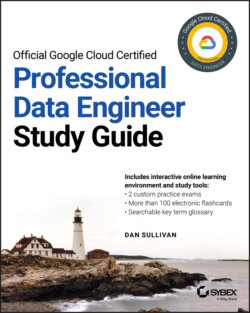Читать книгу Official Google Cloud Certified Professional Data Engineer Study Guide - Dan Sullivan - Страница 36
Data Access Patterns
ОглавлениеData is accessed in different ways for different use cases. Some time-series data points may be read immediately after they are written, but they are not likely to be read once they are more than a day old. Customer order data may be read repeatedly as an order is processed. Archived data may be accessed less than once a year. Four metrics to consider about data access are as follows:
How much data is retrieved in a read operation?
How much data is written in an insert operation?
How often is data written?
How often is data read?
Some read and write operations apply to small amounts of data. Reading or writing a single piece of telemetry data is an example. Writing an e-commerce transaction may also entail a small amount of data. A database storing telemetry data from thousands of sensors that push data every five seconds will be writing large volumes, whereas an online transaction processing database for a small online retailer will also write small individual units of data but at a much smaller rate. These will require different kinds of databases. The telemetry data, for example, is better suited to Bigtable, with its low-latency writes, and the retailer transaction data is a good use case for Cloud SQL, with support for sufficient I/O operations to handle relational database loads.
Cloud Storage supports ingesting large volumes of data in bulk using tools such as the Cloud Transfer Service and Transfer Appliance. (Cloud Storage also supports streaming transfers, but bulk reads and writes are more common.) Data in Cloud Storage is read at the object or the file level. You typically don’t, for example, seek a particular block within a file as you can when storing a file on a filesystem.
It is common to read large volumes of data in BigQuery as well; however, in that case we often read a small number of columns across a large number of rows. BigQuery optimizes for these kinds of reads by using a columnar storage format known as Capacitor. Capacitor is designed to store semi-structured data with nested and repeated fields.
Data access patterns can help identify the best storage technology for a use case by highlighting key features needed to support those access patterns.
